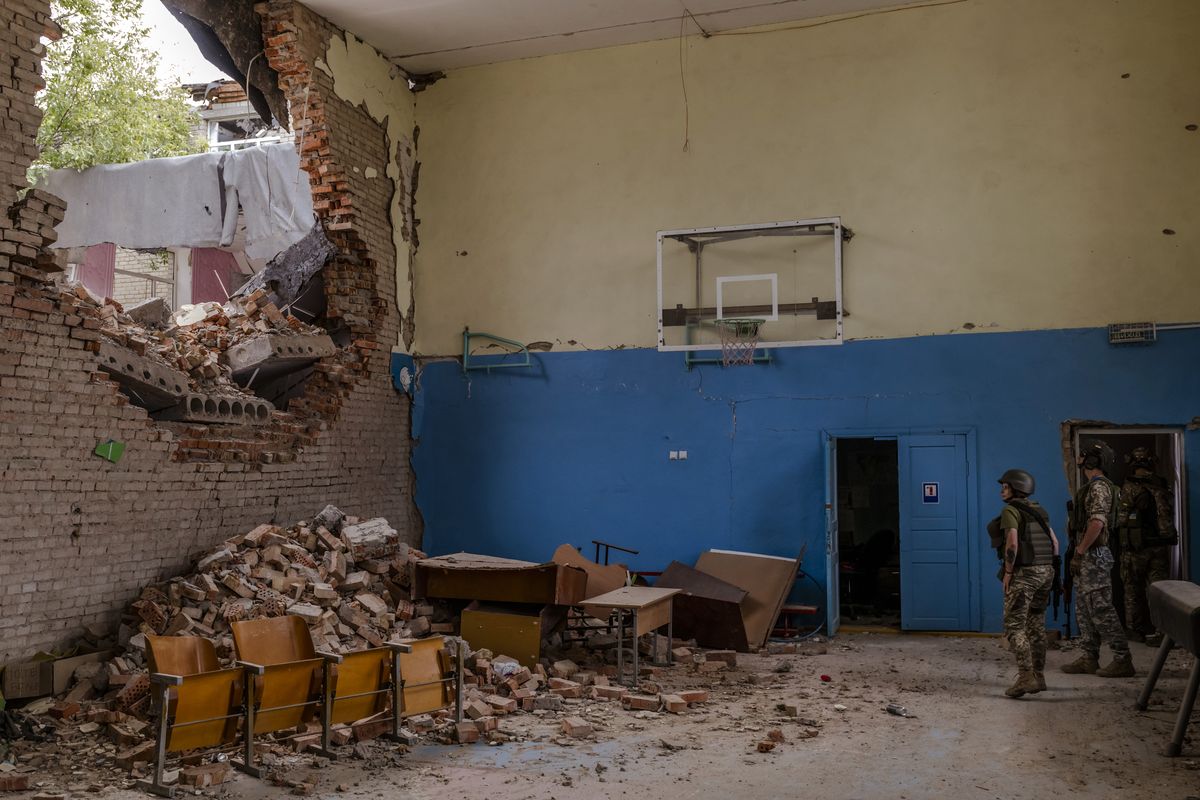Ukraine makes gains in Kherson, but Russia’s advantage holds

MYKOLAIV REGION, Ukraine — In their summer campaign to drive Russian troops from the southern region of Kherson, Ukraine’s forces have decimated Russian command centers and ammunition depots, severed supply lines with precision strikes on key bridges, and sown terror among collaborationist officials with a spate of car bombings, shootings and, Ukrainian officials said, at least one poisoning.
But out in the sunbaked fields along the Kherson Region’s western border, the Ukrainian fighters who would be called on to deliver the knockout blow in any successful effort to retake territory remain pinned down in their trenches. Cuts to Russian supply lines have not yet eroded the overwhelming advantage of Moscow’s forces in artillery, ammunition and heavy weaponry, making it difficult if not impossible for Ukrainian forces to press forward without suffering enormous casualties.
“Without question we need a counteroffensive; I sincerely believe it will come,” said a 33-year-old lieutenant with the call sign Ada, who commands an outpost of trenchworks in the neighboring Mykolaiv region, a few miles from the Russian lines in Kherson.
But he added: “We need the advantage in numbers; we need the advantage in heavy weapons. Unfortunately, this is a bit of a problem for us.”
Even though Ukrainian troops have not moved forward for weeks in Kherson, their artillery campaign appears to have borne fruit, slowing the flow of Russian arms, equipment and troops into the region, Ukrainian officials say. Using high-precision weapons such as the U.S.-supplied High Mobility Artillery Rocket System, or HIMARS, Ukrainian forces have pounded the three bridges over the vast Dnieper River that connect thousands of Russian to their supply lines in occupied Ukrainian territory east of the river.
The strikes have rendered these bridges “inoperable,” said Nataliya Gumenyuk, spokeswoman for the Ukrainian military’s southern command. Over the weekend, Ukrainian forces launched yet another strike on the Antonivsky bridge, the main supply artery into the city of Kherson.
“We clearly understand that the occupiers depend on those arteries to keep bringing in reserves and ammunition and military equipment,” Gumenyuk said.
The question now is whether this pressure on Russia’s supply lines will be sufficient to cripple the fighting capacity of Russian troops and perhaps force the Kremlin to order at least part of the force to withdraw from Kherson and fall back across the river. Several Ukrainian officials in the region said this week that some Russian field commanders had already begun to move their headquarters east of the river, although two senior Ukrainian military officials said there was no evidence of this.
At the front, a withering barrage of Russian strikes inevitably kills a handful of Ada’s troops each day, the lieutenant said. A near miss by a grad rocket a day earlier charred the grass around one dugout position, and in the field nearby, the tail section of another rocket was visible sticking out of the ground. Periodically, a low-decibel thud reverberated across the plains.
It is the same all across the roughly 50-mile Kherson front, which cuts roughly north to south through fertile fields. Ukraine’s commanders and military analysts say that any lunge forward would require vastly more troops and equipment than Ukraine has in the Kherson theater at the moment.
Russia, meanwhile, has shifted resources from fighting in the eastern Donbas to reinforce its positions in the south.
Maj. Gen. Dmytro Marchenko, commander of Ukraine’s forces in the region, recently acknowledged bubbling frustrations with the slow pace of Ukraine’s efforts to retake Kherson, but he said he could give no timetable for the start of major offensive actions.
“I want to tell the people of Kherson to be a little patient — that it will not be as long as everyone expects,” Marchenko said in an interview last week with RBK-Ukraine. “We have not forgotten about them, no one will abandon our people, and we will come to help them, but they need to wait a little longer.”
If the Ukrainians can fully sever the bridges over the Dnieper and keep them cut, the Kremlin will have no choice but to withdraw some forces or force Russian troops to fight with limited supplies and “hope they cope,” said Phillips P. O’Brien, a professor of strategic studies at the University of St. Andrews in Scotland.
“If they haven’t built up considerable depots on the west bank, one would think they would run into major problems in a matter of weeks,” he said.